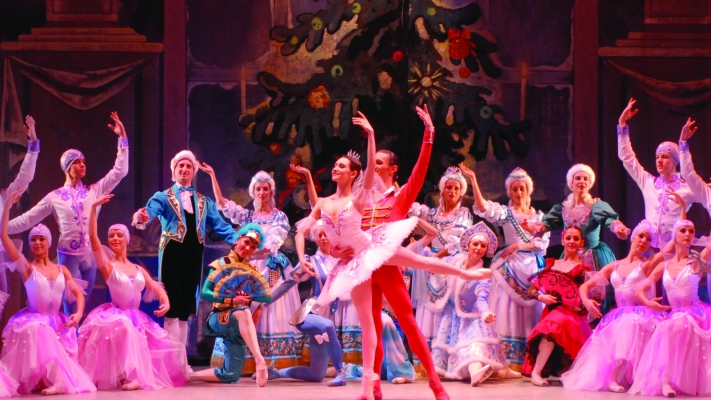The 1892
premiere of
The Nutcracker, as per
time-honoured ballet and symphonic tradition, was a tepid success at best, with
complaints that among other things the prima ballerina hardly appeared
until late on in the Grand Pas de Deux, and one reviewer even had the temerity
to call her podgy,
if not downright fat (I was much more concerned by how very thin, as usual, the
ballerinas all looked).
This quintessential, magical world of young children, toys, Christmas trees, snowflakes and sugared candy can hardly be said to possess a consequential story, consisting largely of unconnected scenes that almost recall a boulevard theatre show. But I dare say Wednesday's audience cared not a jot for that; nor did the familiarity of the show and its score deter this Siberian company, drawn from the frigid wastes of Perm and Krasnoyarsk, from strutting their stuff with vim and grace.
The orchestra got off to a scratchy start in the violins for the Overture – disappointing from professional players – but they picked up immediately for the Decoration on the Christmas Tree scene-setting piece, and shone ever after. The two flutes were prominent, and so were the three horns, the harpist seized her big part with aplomb, and the timpanist doubled as a whole little percussion section on his own, active with triangle, tambourine and then in the Chocolate (Spanish) Dance he used a wood block as a passable castanets substitute.
If conductor Aleksandr Kossinsky seemed a trifle somnolent at times, it hardly seemed to matter since these well-drilled musicians could have no doubt found their way round the score blindfolded. The tunes of Act II are of course famous for their beauty and their multiplicity, but the music for the first of the two pas de deux is oddly dullish in melody and texture, I guess because Tchaikovsky was working to strict instructions from the original promoter re. genre, tempo and even the number of bars.
The big innovation, as for The Snow Maiden on Monday, was the back projection and some computer-generated effects to replace physical scenery. The problem I had with it was that the actual design was quite cartoonish, and the predominant back projection colours were not especially pleasing, with liberal use of ochre, lemon and mustard. The scene changes from Christmas Tree drawing room to fir forest, then snowstorm and then garden with Mughal-era monument were very effective, though, especially since the lighting design was bold, with lots of violets and purples.
And there was a gorgeous coup de theatre where three times a projected figure - Harlequin, Arlequina and then a Moor - fell towards the stage and in a trice turned into a live dancer, shielded until the last instant by a little knot of dancers. Here a gasp went up all round the theatre.
But the overwhelming impression was of scene-switching, endlessly inventive choreography, smooth dancing and those melodies all dazzling the senses. The corps de ballet as mice, with their grey rodent headpieces and black jackets, many of them children, were terrific; there was palpable tension in their stylised battle with the Battle of Blenheim-era soldiers in brilliant white breeches and scarlet tunics. The character acting of the dancers was pervasive; a wheezing, stumbling grandfather, and an upstanding Mouse King (Daniil Kostylev) contrasting with Japanese ballerina Chitose Tsuchia's mincing tea dancer.
The sheer number of costume changes was extraordinary. I especially enjoyed the Arab Dance, all royal blue and turquoise, and in the Waltz of the Flowers the dancers wore pink skirts and little cream jackets while behind them on the screen blue cornflowers and white ox-eye daisies drifted ever upwards.
Of the principal dancers, Elena Svinko was a radiant Marie/Sugar-Plum Fairy (though a trifle wobbly on landing from some of the leaps and the lifts), Dmitry Sobolevski was a graceful presence, flexible in his pliés and jetés, and they combined winningly in the crucial Grand Pas de Deux as the repeated crescendos of the score crashed out around them. I'd also especially mention Anna Fedosova, the jilted village girl from The Snow Maiden. A little taller than the other ballerinas, here in the much smaller part soloing in the French Dance and its aftermath, she stood out in her steps and her stage presence.
When I was waiting afterwards at the Magdalen St bus stop, a fellow ballet-goer, seeing the programme poking out of my pocket cried: 'Oh, you were at The Nutcracker, too! Wasn't it simply stunning?' And before I could reply she did a little Sugar-Plum Fairy jig around me as the bus passengers looked on in surprise!



